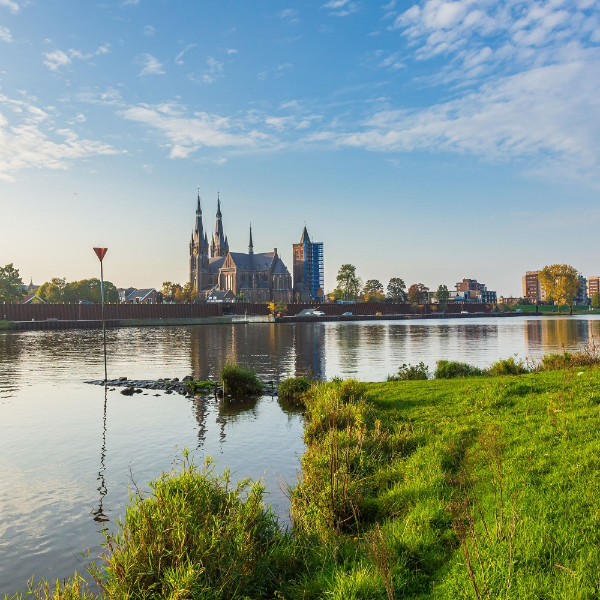Land van Cuijk: identification of potential sustainable heat sources

Land van Cuijk: identification of potential sustainable heat sources
Municipalities in the Netherlands are faced with the challenge of switching over from fossil to sustainable sources with lower CO2 emissions, to supply heating and cooling. To effectively do this, municipalities must know what sustainable sources are available to them and what the acceptable costs of extraction are. In this context, the municipality of Land van Cuijk asked Witteveen+Bos to map out potential geothermal and aquathermal sources.
The Dutch Climate Agreement stipulates that municipalities must establish a Heating Transition Vision (TVW) every five years. The former municipalities Boxmeer, Cuijk, Sint Anthonis, Mill en Sint Hubert and Grave all developed TVWs in recent years. On 1 January these municipalities were merged to create the municipality Land van Cuijk. This new municipality has merged the five existing TVWs. An essential component of this overarching TVW is the objective of deploying more sustainable heat sources. To do this, the potential heat sources and the technical feasibility of 'harvesting' this heat must be established. Solar energy had been considered in the past. However, the TVW suggests that it would be worthwhile to also investigate geothermal and aquathermal sources – independently or in combination with underground thermal energy storage (UTES).
Fast and effective
In relation to the geothermal aspect, Witteveen+Bos completed a geological desk study on the basis of existing seismic data (2D lines) and data generated by previous drillings. These datasets were combined and processed to create an elaborate geological underground model. Next, through means of seismic interpretation, the depth and geometry of the different strata potentially suitable for use as a geothermal reservoir were mapped out. After this, the suitability of the strata for use as a geothermal reservoir was assessed. The findings have been translated into potential maps for the various reservoirs. Finally, Witteveen+Bos identified restrictions and assessed opportunities through means of a detailed fracture mapping and a survey of opposing underground functions, such as groundwater extraction and aboveground restrictions, such as nature.
Benchmark
Because of the use of public data, Witteveen+Bos was able to relatively fast and effectively provide advice concerning the potential capacity (in MW) of obtaining sustainable heat from geothermal sources. The potential geothermal capacity could then be compared with other sustainable sources. The investigation demonstrates that geothermal potential in Land van Cuijk is limited. Consequently, it is not a feasible solution at the present time. However, there is a possibility that geothermal energy will come to the fore over the long-term; for example, when new drillings in the surrounding area provide further insight into the properties of potential reservoirs or when innovative technologies reach maturity.
Favourable aquathermal picture
Compared with geothermal energy, aquathermia has better prospects in Land van Cuijk. The Meuse River, which flows through the municipality, is an excellent aquathermal source and in principle can supply sufficient energy. Moreover, the existing ponds can also be used, although they have a significantly lower potential. The economic feasibility (the business case) in part depends on the heat density: a heat network only becomes financially attractive when a lot of heat is extracted from a small area (quantity of heat extracted per m pipeline).For this reason, Witteveen+Bos analysed the various built environments in further detail using a multi-criterion analysis to create a ranking of potentially interesting aquathermal locations. This resulted in a Top 3 (areas in Boxmeer, Cuijk and Grave), which the municipality had further investigated in terms of the feasibility of aquathermal heat networks. The investigation showed that underground thermal energy storage (UTES) in Land van Cuijk is a less promising technique due to the relatively unfavourable permeability of the relevant strata.
Integrated approach
The feasibility of the above-referenced heat networks not only depends on technical and financial aspects. Before final approval can be given, various other effects must also be considered, for example the impact on humans and nature (usually through means of an environmental impact assessment), potential legal constraints and the ownership of the heat network, which is subject to the requirements set out in the Heating Supply Act 2.0. Last but not least, the solution must be supported by the surrounding community, which requires conscientious communication with and participation from technical stakeholders and residents.

More information?
